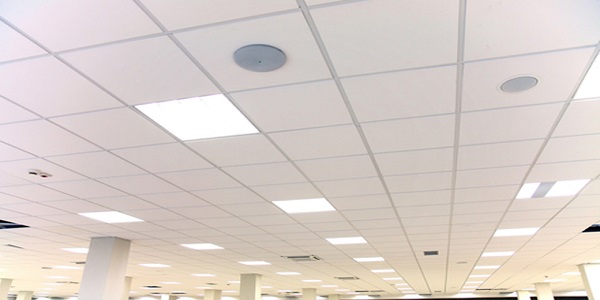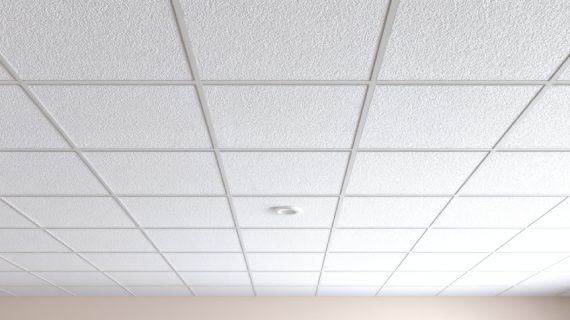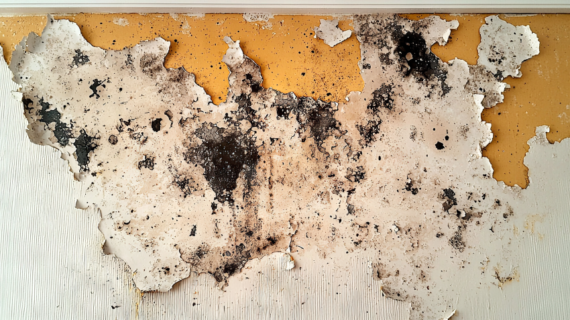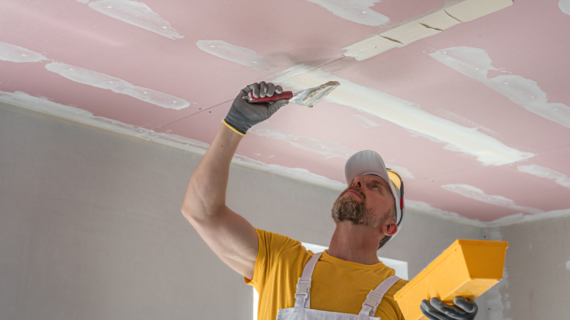Benefits of Suspended Ceilings
When it comes to modern interior design and construction, the benefits of suspended ceilings go far beyond aesthetics. From improving acoustics and energy efficiency to simplifying maintenance, this ceiling system offers practical solutions for both residential and commercial spaces.
What Are Suspended Ceiling Grids?
In architecture and interior fit-outs, suspended ceilings are a practical method for managing building services while achieving a clean, finished appearance.
T Grid Suspended ceilings, also called drop ceilings, create a space in between called a plenum that allows for mechanical and electrical equipment to be run while maintaining an aesthetic ceiling appearance. A key component of suspended ceilings is the T Grid suspension system, which provides the structure to mount ceiling tiles or panels. T Grid suspended ceilings from Mada Gypsum, Saudi Arabia utilize this effective grid framework to deliver various practical and visual benefits.
Benefits of a Suspended Ceiling with T-Grid Suspension Systems
Refined Interior Spaces with Modular Ceiling Systems
T Grid ceilings offer a perfect suspended ceiling solution for achieving clean lines and visual uniformity. Their modular design allows architects to balance aesthetics with ease of layout and integration.
Aesthetic Appeal in Modern Interior Design
T Grid suspended ceilings enable the creation of an aesthetic look that is easy to install. The modular ceiling tiles, with different edge details, neatly fit into the T Grid suspension system to generate a polished, uniform look. This allows for a tidier appearance compared to an exposed concrete slab ceiling. The suspended framework helps avoid a cluttered view.
Customization Options Using Gypsum and Acoustic Tiles
The adaptable T Grid layout provides flexibility to create different styles by using diverse ceiling tiles. Tiles come in various materials, such as gypsum, metal, and mineral fiber. There are also numerous colors and patterns available. This versatility allows for easy customization to complement any interior décor.
Acoustics and Sound Control in Ceiling Design
One of the main advantages of installing a suspended ceiling is improved noise control. Options like acoustic ceilings and sound absorption tiles help create quieter, more productive spaces.
Acoustics and Sound Absorption
The air cavity between the structural ceiling and the suspended ceiling helps absorb sounds rather than allowing them to reverberate. This significantly dampens noise transmission for enhanced ambient acoustics. The T Grid network also helps reduce vibrations that can cause noise.
Acoustic Ceiling Applications in Workspaces
Given their noise reduction abilities, suspended ceilings are ideal for soundproofing settings like offices, theaters, music rooms, and more. The strong T Grid system is a key player in constructing an effective sound barrier in the ceiling suspension.
Better Energy Performance with Ceiling Insulation
Ceiling grids support better energy efficiency by helping regulate temperature and lighting. Integrating insulation and light fixtures into the ceiling structure reduces operational costs in both residential and commercial office settings.
Thermal Insulation for Improved HVAC System Efficiency
The plenum space between the two ceilings resists heat transfer, delivering thermal insulation to conserve energy. This insulation ability helps substantially reduce heating and cooling expenses. The T Grid system assists in maximizing this insulating air gap above the tiles.
Cost-Effective Lighting Integration in T Grid Ceilings
The T Grid suspension system’s modular framework allows for seamless integration of energy-efficient LED lighting into the ceiling. This creates a sustainable and budget-friendly lighting solution, reducing energy costs.
Easy Maintenance and Service Access
T-grid systems make it easier to install a suspended ceiling that provides access to services above. The design simplifies the installation process and allows users to reach concealed elements without disturbing the full structure.
Access for Maintenance of HVAC Systems
The plenum area above suspended ceilings neatly conceals electrical wiring, plumbing, and HVAC ductwork. Ceiling tiles can be easily removed as needed for maintenance access without major demolition, demonstrating the convenience of ceiling suspension for accessing services.
Durable Grid Suspension Systems for Long-Term Use
Constructed from resilient materials like metal, suspended ceiling systems can endure for decades with minimal upkeep or tile replacement required. The sturdy T Grid network offers a strong foundation built to last.
Fire Safety Benefits of T Grid Suspended Ceilings
Suspended ceilings can incorporate fire-rated ceiling components such as mineral fibre tiles and metal grids. These materials not only meet compliance requirements but also improve the safety of your secondary ceiling system.
Using Fire-Resistant Gypsum and Suspended Designs
Many suspended ceiling tiles and grids feature fire-resistant materials like mineral fiber and metal in their construction. These materials significantly inhibit fire spread in the event of a blaze.
Compliance with Fire Safety Regulations:
Adhering to crucial fire safety regulations in commercial spaces is a must. Suspended ceilings incorporating fire-resistant T Grid systems assist in meeting these compliance standards, promoting safety. When planning construction or renovation projects, don’t overlook the potential of suspended ceilings. Though the benefits may not seem obvious at first glance, suspended ceilings offer advantages beyond merely concealing infrastructures. With thoughtful design, they can transform spaces aesthetically and functionally.
Modern suspended T-bar ceiling systems provide more than just visual appeal; they support efficient installation with lay-in and tee grid formats that adapt to various design and functional needs.
T Grid Suspended Ceiling FAQs
What materials are commonly used in suspended ceiling tiles?
Suspended ceiling tiles are manufactured using a range of materials, with gypsum being one of the most widely used due to its smooth surface, fire resistance, and ease of handling. In combination with a metal ceiling grid, gypsum tiles help achieve a modern and functional finish. These tiles are suitable for both commercial and residential settings, offering durability and design flexibility.
Are suspended ceilings suitable for modern interior spaces?
Yes, suspended ceilings work exceptionally well in contemporary settings. Their clean lines and concealed services support a polished look that enhances interior design schemes. Whether you’re working on a drywall ceiling project or a retail space, the grid system allows for versatile tile layouts that match the aesthetics of both minimalist and decorative interiors. The result is a seamless ceiling design that doesn’t compromise on utility.
Can suspended ceilings help reduce energy bills?
Absolutely. One of the key advantages of suspended ceilings is their contribution to energy efficiency. The plenum, or space, created between the structural ceiling and the suspended grid can act as an insulating layer, helping to regulate room temperature and reduce heating or cooling costs. Additionally, the layout allows for efficient light fixtures and LED integration, further lowering electricity usage in large-scale applications.
What makes a ceiling system suitable for sound-sensitive environments?
In sound-sensitive spaces like libraries, recording rooms, or open-plan offices, the right ceiling system plays a crucial role. A suspended ceiling with integrated acoustic tiles helps reduce background noise and echo, improving focus and comfort. These tiles are designed for optimal sound absorption, making them ideal for areas where speech clarity or quietness is important. Additionally, combining these materials with a robust T Grid framework ensures that acoustic performance doesn’t come at the cost of durability or visual appeal.
How easy is it to maintain or replace suspended ceiling tiles?
Maintenance is one of the main benefits of T Grid systems. The suspended ceiling panels can be individually removed to provide direct access to the plenum area for servicing HVAC systems, wiring, or plumbing. This makes troubleshooting much simpler compared to traditional ceilings, where invasive work is often required. The modular layout also allows damaged or discoloured tiles to be replaced without affecting the entire ceiling.
Are suspended ceilings customizable to fit different room layouts?
Definitely. With options like tile designs, grid profiles, and different panel sizes, suspended ceilings can be tailored to meet both functional and aesthetic requirements. Whether you’re installing a new suspended ceiling in a retail space or upgrading a commercial office, the system supports a wide range of ceiling finishes and tile configurations, including custom shapes and edge details to match your design goals.
Call the Building Materials Experts at Mada Gypsum
Have questions about ceiling systems or planning your next project? Reach out to Mada Gypsum, Saudi Arabia, a trusted name in the industry, for your construction requirements. Our expertise and high-quality solutions can help transform your space into a more beautiful, functional, and efficient environment. To learn more about the benefits of suspended ceilings, contact us at +966 14 325 3253 or write us at info@madagypsum.com to learn more.





